Yes Aotearoa can mobilise by example

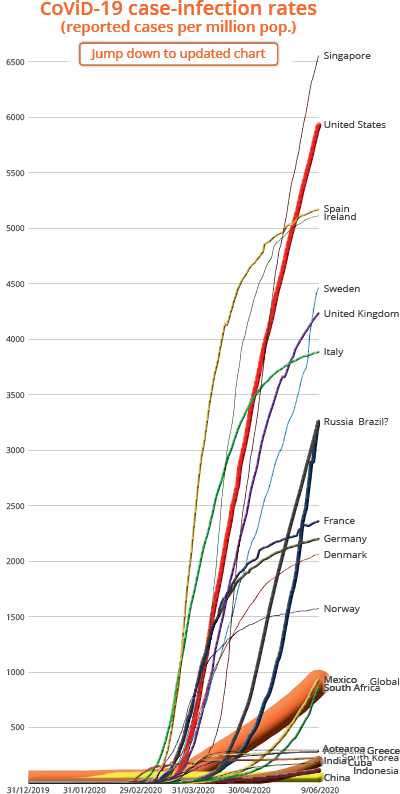
Becoming Wise Before the Event: Despite having had influenza pandemics since 1889, the world has been found to be woefully ill-prepared for this one, when, predictably unpredictability, it manifested. Preparing for the potentially far-deadlier effects of anthropogenic global heating, as well as being an inescapable existential imperative, can simultaneously better equip humanity to respond to pandemics. Here, the all-but-imperceptible case-infection rates displayed for India and Indonesia are grave indicators of governments in desperate denial of their countries’ now-destined roles in the raging pandemic—and early exemplar Singapore demonstrates the ruinous consequences of neglecting its most vulnerable workers. Aotearoa and Australia, meantime, have their time cut out to keep within cooee of covid-19-test-kit-exporter extraordinaire South Korea’s standout response. graph Mahurangi Magazine | data ecdc – nzmoh 9 June 2020
As the epitome of physical distancing, Aotearoa is perfectly placed to lead the global project to survive the covid-19 pandemic, and anthropogenic global heating. In respect to climate, after petulantly insisting cop26 must proceed, on 1 April it was finally postponed, until 2021.
That it took quite so long for the United Nations bureau responsible to concede it was unviable to proceed with a gathering of 30 000 people was one thing, but that the same bureaucrats, and intending attendees, can collectively imagine that physical meetings brazenly involving that scale of fossil-fuel use began to be appropriate in the first place beggars belief.
After 25 years of such conferences, and still no global mobilisation of climate action, it can only be hoped that the rapidly escalating covid-19 pandemic puts an end to the charade. The inescapable reality is that anthropogenic global warming can no longer be treated as an inconvenience that has to be grudgingly funded. Addressing anthropogenic greenhouse-gas emissions must become core business for the global community. This means making climate-action mobilisation the all-consuming mission of Earth Inc., and, arguably, the most plausible path by which that could be achieved is for Aotearoa to demonstrate that it can be done, but crucially, by a democracy.
The first requirement is for Aotearoa to exercise its economic sovereignty—chart its own economic and monetary course. At present, it increasingly exists to develop property, plastered with high-carbon, high-cost ticky-tacky, to push to the privileged classes who’ve lost all faith in the future of their native lands—the headlong rush to convert farmland into marketable, external-currency suburbia. It is a far-from heroic replacement for the farming that was oncepre-World War II, in fact, but rapidly less so post- the undisputed backbone of a nation, even if meat and milk was reaching its historic shelf life. Aotearoa, by playing to its strengths, can readily build imminently relevant replacements for its spectacularly unsustainable jet-fueled, campervan-based tourism industry, post-covid-19.
What is required, however, is to jettison the fiction that the market can, much less deserves to, provide the leadership necessary. But nor should leadership be the sole prerogative of political representatives and government officials, to make it up as they go along, as is currently highlighted by the far-from transparent proceedings of the covid-19 technical advisory group that are not even shared with Professor Sir Peter Gluckman or Dr Ayesha Verrall, infectious diseases doctor and epidemiologist, at the University of Ōtago. Given that Sir Peter’s policy-improvement-frameworks legacy to the Department of the Prime Minister and Cabinet doesn’t appear to have been updated since 2 July 2019, it is probably safe to assume that the policy methods toolbox has been left, unopened, in the trunk.

Darkly Disturbing Political Distancing: That an infectious diseases doctor and epidemiologist, and Labour Party district health board deputy chair is held at arm’s length by the Labour-led government’s covid-19 technical advisory group, illustrates the appalling opacity that prevails in New Zealand’s putative democracy. Dr Ayesha Verrall is, however, in the very excellent company of former chief science advisor to the prime minister, Professor Sir Peter Gluckman. image Newsroom
Remarkably, given the need to instantly borrow $12.1 billion offshore to keep businesses afloat and employees paid, Aotearoa predominantly paid for its contribution to fight World War II from taxes and internal borrowing. Although lend-lease from the United States kicked in, in 1942, this was, in monetary terms, almost cancelled out by New Zealand’s reverse lend-lease. The entire cost of the war, £670 millionReserve Bank of New Zealand inflation calculator: $30.7 billion, was said to have paid for within a few years of its culmination. Be that as it may, the war to salvage a survivable climate, if it were to be waged with conviction, would require 100% of the $12 billion committed to infrastructure pre-covid-19, and then some, to be spent on measures that will reduce emissions, and protect public health. Borrowing from overseas in that manner would not begin to be sustainable.
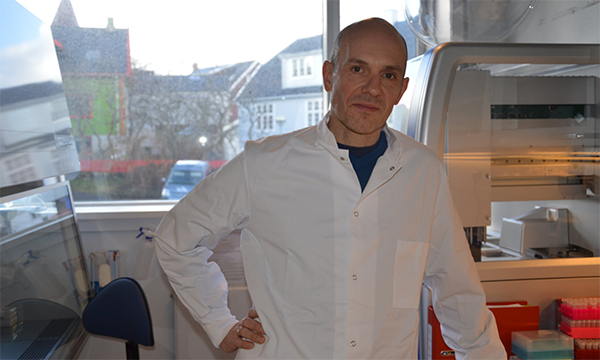
Saved by a Salmon Scientist: Debes Christiansen, rather than sit out the pandemic, retooled his salmon-virus-testing laboratory and single-handedly, so to speak, spared the Faroe Islands of covid-19 fatalities. Had Aotearoa tested at the rate Dr Christiansen has facilitated, more than 480 000 New Zealanders would now have been tested, whereas, as of 9 March to 7 April 2020, fewer than a tenth of that number have been. Meanwhile, in a breakthrough that might save millions of lives in a country of 1.4 billion, and elsewhere, the Indian Council of Medical Research has developed a low-cost, 1-hour paper-strip test for covid-19. image Therese Soltveit | Kyst.no
There are, of course, far healthier options, than burdening the young with debt and an increasingly unsurvivable climate. One of the more obvious, of things to stop, is to stop building in further car-dependency—the building of more motorway and car-centric suburbia. What physical distancing has instantly demonstrated is that a significant proportion of people can work remotely, at least part of the time, and that it is reasonable that it be made to be mandatory during a crisis that calls for it. Clearly, a contagion meets that criteria. But so too does anthropogenic global heating. Any form of transport carries a carbon cost, and certainly an economic one. Battery-powered buses still need to obtain their energy from somewhere, and renewable energy is both expensive and far-from clean, with some forms being particularly dirty, not to mention downright toxic. A combination of range-extended trolleybuses, and heavy, electrified rail beats most alternatives, and has the advantage of not relying on the phantasy that some form of Moore’s law magically applies to batteries.
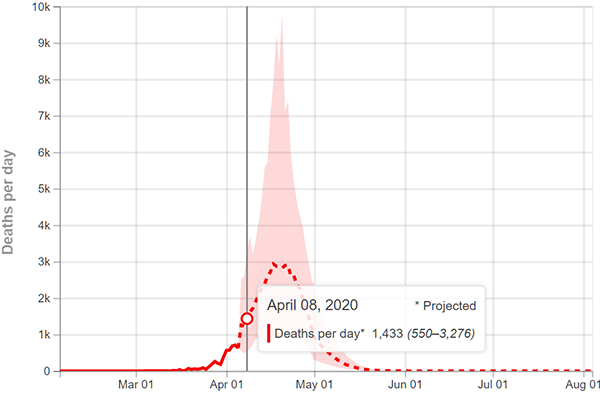
Appalling Projection: While the official United Kingdom figure for deaths on 8 April was nearly 500 fewer than the Institute for Health Metrics and Evaluation projection for that day, nor, astonishingly, does the former include care-home deaths. With the ample warning the world has had regarding the inevitability of pandemics, that there is no, one authoritative online site that provides a comprehensive, transparent global emergencies war room is far from reassuring, given the crises that lie ahead. Meantime, the United Kingdom will be extremely fortunate if its eventual covid-19 deaths are significantly fewer than the ~66 000 projected by the University of Washington-based institute. projections Institute for Health Metrics and Evaluation
Where there is no physical necessity for work colleagues to congregate under the same roof, daily, it is unconscionable to contribute to global heating by requiring them to do so. Without all-out climate-action mobilisation, it is entirely plausible that the climate could heat 5° this century. One quantification puts the human cost of that at 2.5 billion premature deaths. So far, countries accounting for about 1.4 billion population appear to be containing covid-19. The balance of about 6.4 billion of population is at the mercy of heads of state in determined denial for so long that their trajectories are as bad as, or worse than, those of the United Kingdom and the United States, which are projected to suffer a collective total of 148 000 deaths. The eventual toll of this pandemicas published, influenza pandemic, which of course it is not could be in the order of 3 million deaths. Given that global heating could kill 10 times that number, on average, every year until the end of the century, and beyond, it is existentially imperative that this pandemic demonstrates that it is not predestined that humanity will sleepwalk into an increasingly, grotesquely unsurvivable climate.
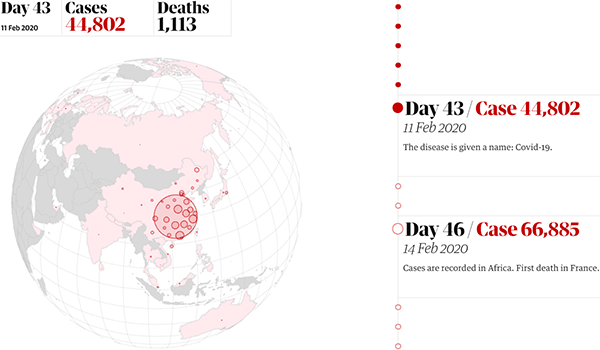
Scientific Reticence and Pandemic in Particular: Dr James Hansen has long-lamented the scientific reticence that makes it all too easy for politicians to sit on their hands and focus on more immediate challenges such as ensuring corporations continue to fund their election campaigns, without which systemic corruption of democracy their parties cease to exist. With 2016 popular-presidential-vote-loser Donald Trump threatening to defund it, it is perhaps less surprising that World Health Organisation failed to declare covid-19 a pandemic four weeks earlier than it did. infographic The Guardian
Dr James Hansen, for one climate scientist, is determinedly of the view that the worst impacts of global heating can be averted. Dr Hansen is using his covid-19-enforced physical-distancing to finish his successor to Storms of My Grandchildren: The Truth About the Coming Climate Catastrophe and Our Last Chance to Save Humanity, published 11 years ago:
I was 75 years old, and not making progress. So the best thing I could do was write down what I had learned, for the sake of younger people: I resolved to write the long-delayed Sophie’s Planet.
Influenza pandemic and anthropogenic global heating share dissimilar inevitabilities. They are similarly inevitable, but in the case of global heating, the inevitability is far less random. The next novel virus, for example, might not wait a respectful 10 or 7 years before becoming pandemic. It might also be decades, but only the very optimistic would venture that the humanity might enjoy a hiatus lasting the four decades between the 1918–19 and the 1957–58 influenza pandemics, anytime soon. At least not unless most of the world’s virus-spreading—and, wantonly climate-disrupting—22 000-odd airliners remain largely grounded, long-term.
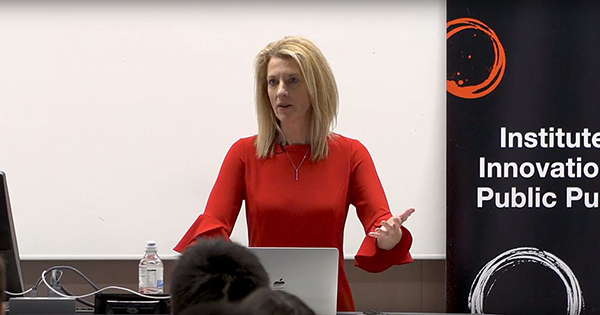
Only Conversation Worth Having: “Once we understand that money is a legal and social tool, no longer beholden to the false scarcity of the gold standard, we can focus on what matters most—the best use of natural and human resources to meet current social needs and to sustainably increase our productive capacity to improve living standards for future generations.” image ucl Institute for Innovation and Public Purpose
Dr Hansen has determinedly advocated for a fee to be placed on fossil fuel, fully flat-rate refundable to citizens. But, besides the mechanism not being adopted by the United States, or by China, the notion that the market simply needs a nudge, for a habitable climate and to endure is naïve. The task requires urgent and sustained mobilisation. Reasonably, Aotearoa could have stopped the importation of covid-19 in its tracks mid-February, rather when it went into lock-down, by which time globally reported cases were nearly 800% higher. Similarly, ever day wasted increases the magnitude of the mission to salvage a survivable climate, and worse, vastly increases the odds of the task becoming unachievable. The main impediment to mobilisation is a crisis of imagination:
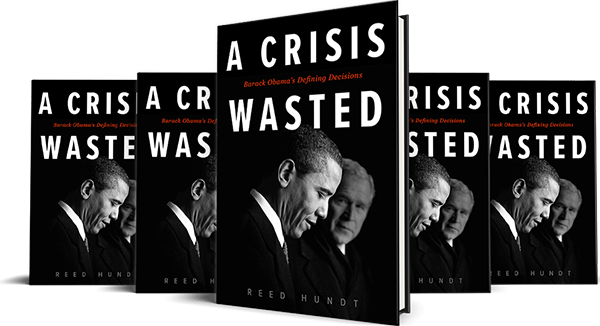
The Audacity to Hope: That in a halfway rational world, A Crisis Wasted: Barack Obama’s Defining Decisions would be Prime Minister Jacinda Ardern’s required physical-distancing reading, and inspiration. A crisis that is on track to take a million lives or more of the most vulnerable is no time to be apologetic about taking Rooseveltian action, rather than the ultimately unaudacious Obamian route—to the country club and the golf course. image RosettaBooks
The well-proven solution is to use taxes to discourage harmful activity, but to directly government-fund the public works required to slash greenhouse-gas emissions. Of course, it is entirely possible to misspend public money. But the best insurance against that is absolute transparency, annual online elections, and brutally simple, matched-small-fee campaign finance reform. The market has been given every opportunity to redeem itself, but not only has its invisible hand visited disruption to the climate, it has not been able to get out of its own way to save itself, with the mother of all government bailouts.
Only the immensely powerful have anything to fear from democratisation of the economy. Worryingly, the immensely powerful are invariably very wealthy, and are likely to use that wealth to ensure their dominance of the world order is not disrupted. New Zealand’s relatively uncorrupted democracy, and its history of democratic renewal, may provide New Zealanders with the courage to clean up their deplorable no-means-yes campaign finance landscape, paving the way for a programme of immediate, meaningful climate action. An urgent requirement is to tear up the climate commission’s terms of reference and replace it those that make it a veritable climate-action mobilisation commission. Setting up a commission to come up with pathways and targets was something that could have been tried three decades ago, when there was at least a vaguely plausible possibility that a market-led approach might have worked. It is supremely ironic that the world has misplaced its sense of history on the cusp of humanity’s ultimate test—the salvation of a survivable climate—as though it was something that could be relegated as a rainy day job, while the real business of economic growth was got on with.
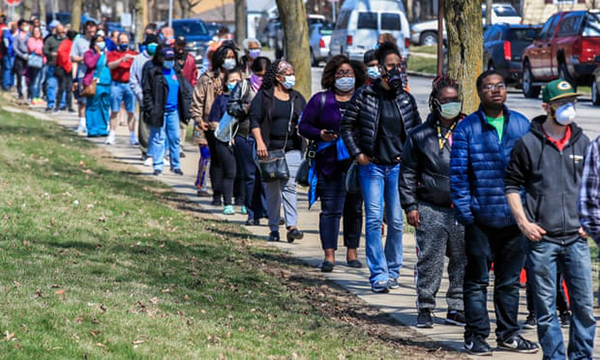
Jim covid-19 Crow: Republicans shamelessly blocked efforts to allow Wisconsinites to postal vote, but that was predictably par for their blatant voter-suppression course. What was perverse, pointless, and contemptible was that the already resoundingly beaten Bernie Sanders put those lives at risk, only to throw in the towel before their votes were fully counted. Small wonder Alexandria Ocasio-Cortez cooled towards Sanders, long since. image Tannen Maury | epa
Aotearoa, by tooling-up for, and throwing itself into the war to slash greenhouse-gas emissions, including by actually establishing a billion of the right trees, including indigenous, in the right places, by the right, realistic forestry methods, could demonstrate that climate-action mobilisation is not only a sound economic alternative to business as usual, but the only alternative. Given the arcane skills honed to convince people to act against their own long-term interests, the challenge of recruiting support for the heroic, exhilarating, sometimes dangerous quest to salvage a survivable climate, shouldn’t be insurmountable. The danger, for some, will be real, particularly when corporate interests increasingly resort to financing covert operations against the climate-action-mobilisation flagbearers.
Pakistan, during this covid-19 crisis, demonstrates the dangers of challenging authorities, when doctors were beaten and arrested for having the temerity to beg for personal protective equipment, in the face of appalling fatalities amongst front-line workers worldwide, and the equally appalling knowledge that inadequately protected and tested medical staff are infecting others. In Spain alone, as of 4 April, 18 324 health workers were infected. In Aotearoa, however, frontline fighters for radical climate-action mobilisation are likely to meet with little more than bot-orchestrated social media approbation—the likes of infantile, celebrity-pedalled 5g–ccovid-19 conspiracy.
Intelligent a-listers, on the other hand, combined with Prime Minister Jacinda Ardern’s charisma, could champion the meaningful climate-action mobilisation that people need to see happening, to engage, neurons blazing, in the mission to live heroically and salvage a survivable climate.
Achilles’ Heel of current strategies The following are the two concluding paragraphs of Asymptomatic Transmission, the Achilles’ Heel of Current Strategies to Control Covid-19, published 28 May 2020:
Ultimately, the rapid spread of Covid-19 across the United States and the globe, the clear evidence of SARS-CoV-2 transmission from asymptomatic personsArons MM, Hatfield KM, Reddy SC, et al. Presymptomatic SARS-CoV-2 infections and transmission in a skilled nursing facility. N Engl J Med. DOI: 10.1056/NEJMoa2008457, and the eventual need to relax current social distancing practices argue for broadened SARS-CoV-2 testing to include asymptomatic persons in prioritized settings. These factors also support the case for the general public to use face masks when in crowded outdoor or indoor spaces. This unprecedented pandemic calls for unprecedented measures to achieve its ultimate defeat.

Becoming Wise Before the Event: Despite now experiencing 17 pandemics—and 6 of those since 2002—the world was found to be pitifully ill-prepared for when, with predictable unpredictability, this current pandemic manifested. Preparing for the potentially far-deadlier effects of anthropogenic global heating, as well as being an inescapable existential imperative, can, simultaneously, better equip humanity to respond to epidemics, and prevent more becoming pandemics. Here, the initially all-but-imperceptible case-infection rates displayed for India and Indonesia were grave indicators of governments in desperate denial of their countries’ now-destined roles in the raging pandemic—and early exemplar Singapore demonstrates the ruinous consequences of neglecting its most vulnerable workers. Nigeria, however, scams all 207 million of its citizens, by testing fewer than 1% of them, thus hiding the appalling impact of the pandemic there. Australia long-since lost her battle to keep within cooee of covid-19-test-kit-exporter extraordinaire South Korea’s standout response. Aotearoa, meantime, has flat-lined in a good way. All countries’ infection rates are under-reported, some because a few cases, particularly early in the pandemic, are misdiagnosed, but in other countries monstrously, due to dysfunction and/or lack of transparency. The diameter of each line on this graph is proportional to the country’s population. graph Mahurangi Magazine | data Our World in Data 12 November 2020
Join FluTracking now and help prevent future pandemics…
Salutary Lesson in Seasonal Influenza: Physical distancing has also paid dividends in reducing the annual toll extracted by flu that, despite its deadliness, is treated as an inconvenience rather than the killer it is, particularly of the very young, the elderly, and the pregnant—“On average, approximately 400 deaths are attributed to influenza and its complications annually.” covid-19 provided the opportunity to begin collecting flu-symptom data earlier than was done 2018–2019. graph Department of Health Australia | Ministry of Health Aotearoa | labels Mahurangi Magazine
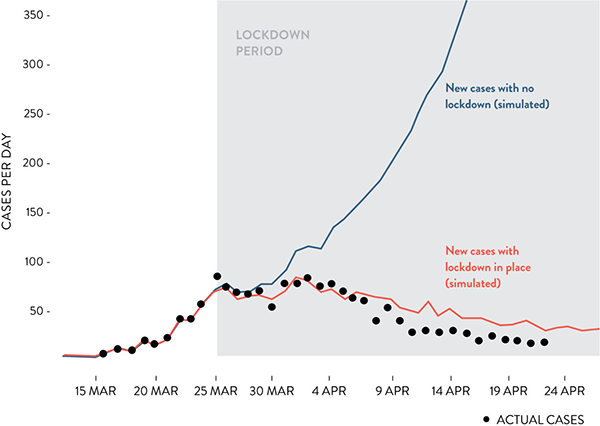
New Zealand’s Altered Future: Moving nine days faster than Ireland, and more emphatically physically distancing, Aotearoa has avoided Ireland’s near vertical trajectory—until the middle of May—of reported covid-19 cases. Ireland’s prime minister then donning his sweats was perhaps great optics, but responding to, for example, fellow general practitioner Dr Marcus de Brun, or to nursing-home representatives more than seven weeks earlier, would have constituted a far more heroic course of action. Aotearoa, for its own survival, now needs to convince the world to alter its determinedly fossil-fuelled future. chart New Zealand Geographic | Te Pūnaha Matatini
